The Context
When it comes down to a discussion of coat colors in Jindos, it's important to keep in mind two questions.
1. What colors are possible in the Jindo vs. impossible in the Jindo?
2. What is desired in the Jindo (by Koreans) vs. what is not desired in the Jindo?
In order to answer the first question, it's necessary to become familiar with the coat colors historically found in Jindos. With this knowledge, a chart of possible genes combinations and possible phenotypes can be predicted.
In order to answer the second question, it's necessary to have free flowing conversations with Korean old-timers who are knowledgeable about Jindos and about what is desired in Jindos. Earnestness to learn has to be proven in order to go beyond the superficial polite talk that is caused by a wariness to offend.
Overview
This section will cover coat colors that are not considered characteristic of purebred Jindos or proper Jindos.
It is my opinion that such colors should not be bred for. It is my opinion that breeders who are deliberately breeding these colors are turning their back on their heritage breed and creating a new fad breed to line their own pockets with money.
1) Badukyi : pinto.
| Loci |
Relevant Alleles |
| S |
Normal pattern = S
pinto pattern = sp |
2) "Chokho" : chocolate
| Loci |
Relevant Alleles |
| B |
Normal black hairs and skin color = B
brown/liver hair pigment and skin color = b |
--------------------------------------------------------------------------------------------------------------------------------
The Controversial Colors
1. Korean Name = Badukgi
common English name = pinto
gene = pinto (sp)
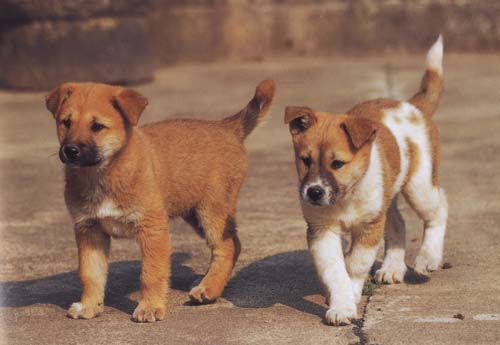
left pup has mild spotting, right pup is a pinto
photo by Im, In Hak |
In Korean, the term "badukgi" has the English equivalent of "puppy" or "doggie."
This is a white-spotting pattern overlayed over other colors. For example, dogs that are genetically Ay (red) with spsp will have red spots on a white base. Dogs that are genetically atat (black/tan) with spsp will have black spots on a white base.
This gene affects the skin as well as the coat although two will not have their whites matched up perfectly. Pink skin leather can occur on the eye rims, anus, and lips. Splotchy edges to the nose may occur.
Pinto is in the same gene family as piebald, pure white (associated with deafness), white-spotting, etc. It is usually a recessive gene to full color, but it has an accumulative effect. Continually breeding mis-marked Jindos with white socks to each other will sometimes produce a pinto. The biochemistry behind this is complex and is linked to the gene expression of adrenals and melanocyte migration. (See Belyaev Russian Fox Experiment)
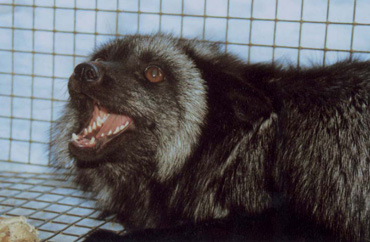
wild fox |
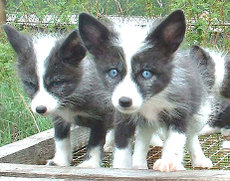
tamed fox |
| Belyaev Russian Fox Experiment. Selection for ONLY tameness in silver foxes for over 50 years affected their gene expression of adrenaline/melanocytes, resulting in these "doggie" features. Additional "doggie" features outside of the melanocyte pathway included dropped ears. |
This gene expression can be predicted in the same manner as a color gene mutation (ie. sp) once it appears in a dog.
The pinto pattern is considered a degeneration and not proper for a Jindo dog. Some older Koreans do not consider it a Jindo color at all but the result of mixings with either Korean mainland dogs or non-Korean dogs.
The pinto pattern in the Jindo dog remains due to two reasons:
1) fringe fad breeders deliberately breeding this pattern,
and,
2) pinto not being recognized in ee (baekgu) dogs.
It can be difficult to make out cream or white spots against a white background. Close examination of the head can sometimes make out the white blaze pattern on the face if the dog is more cream-colored than white.
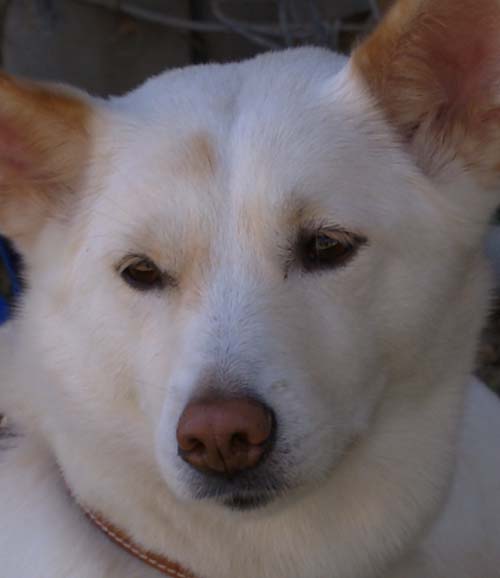
A badukgi?
Photo by Ann Kim |
The pattern may be easier to pick out when the dog is a young pup.
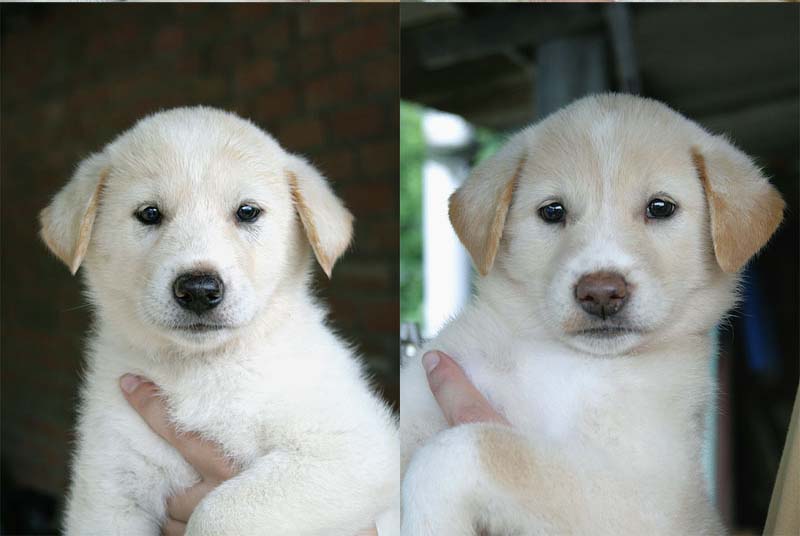
Littermates. The right pup is an obvious Badukgi pup that has a white blaze down the forehead, white surrounding the nose, and an unusual nose color. The left pup is a mystery. |
2. Korean Name = "Chokho"
common English name =chocolate, chocolate/tan, liver, liver/tan, liver-pigmented
gene = brown-dilute or liver-dilute (b)
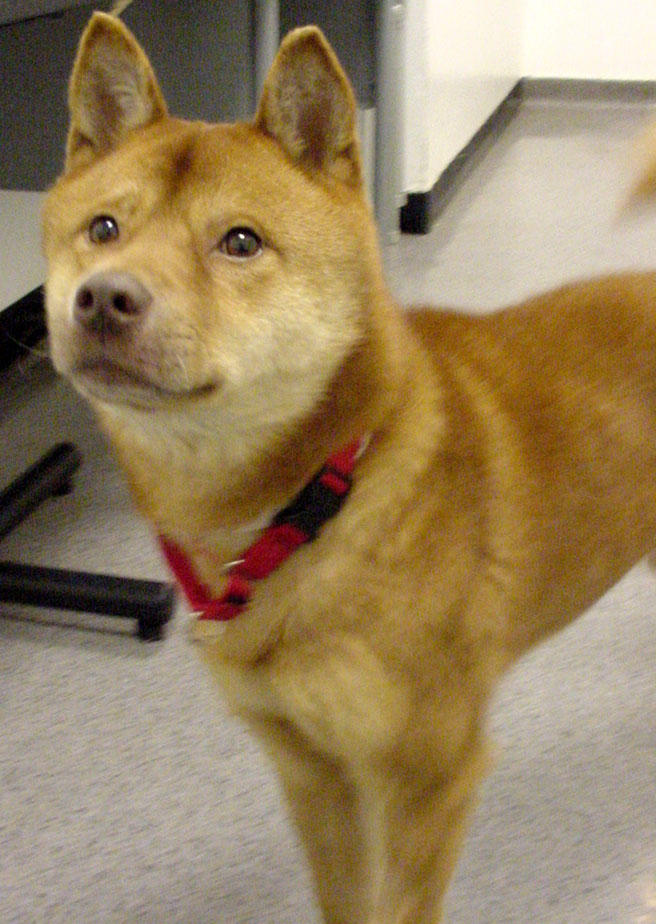
Yellow dog with liver hairs (lacks black hairs) and liver leather on eye rims, nose and lips |
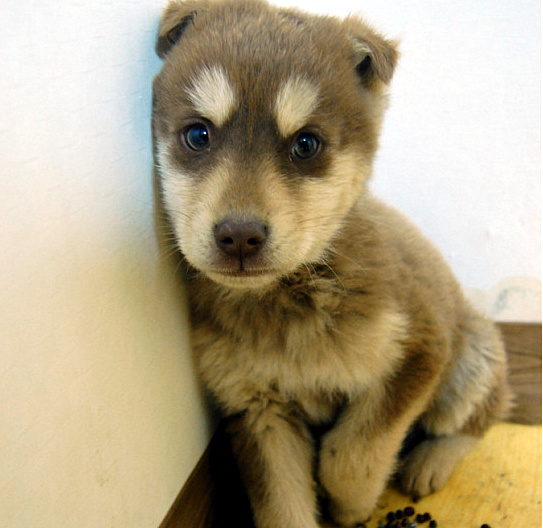
"Chocolate/tan"
Liver leather on eye rims, nose, and lips |
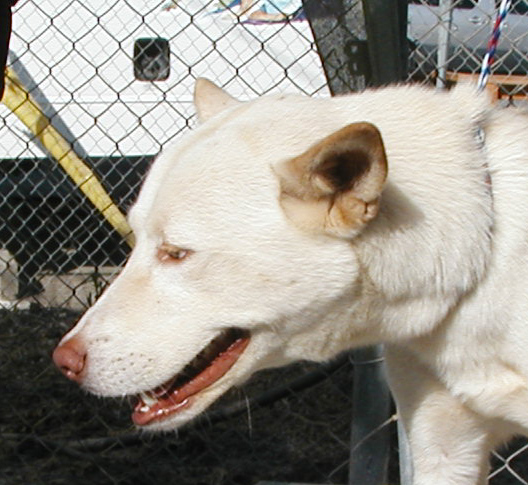
White dog with no black pigment on eye rims, nose, and and lips.
|
The name, chokho, is a Korean version of the English word for chocolate. This dilution gene has no historical basis in Jindos and is a new occurance occuring in the past decade.
This brown dilution gene changes black hair pigment to a brown color. It changes skin leather from black to brown. Eye rims, noses, and lips are turned brown instead of black. If this color was at all indigenous to Jindos, there would not be the rule that all color Jindos must have black noses. For white dogs, close examination of the skin leather needs to be done to determine if the dog is liver-pigmented or just insufficiently black-pigmented.
Insufficiently
Black-pigmented |
Liver-pigmented |
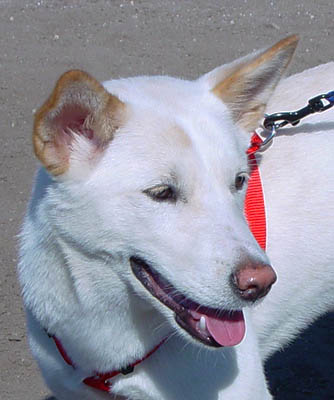
|
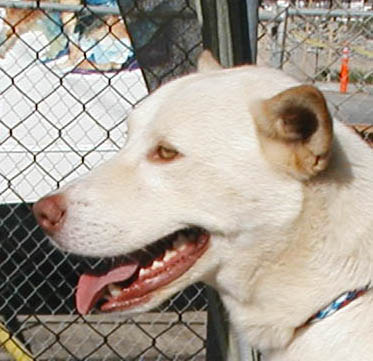
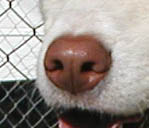
|
It is my strong opinion that this dilution gene is the result of mixings in the 1990's when the black/tan color in Jindos suddenly became very popular and in demand. Unscrupulous people were introducing other breeds to quickly make black/tan dogs, and buyers were not savy enough to make out the difference between a purebred and a mixed Jindo.
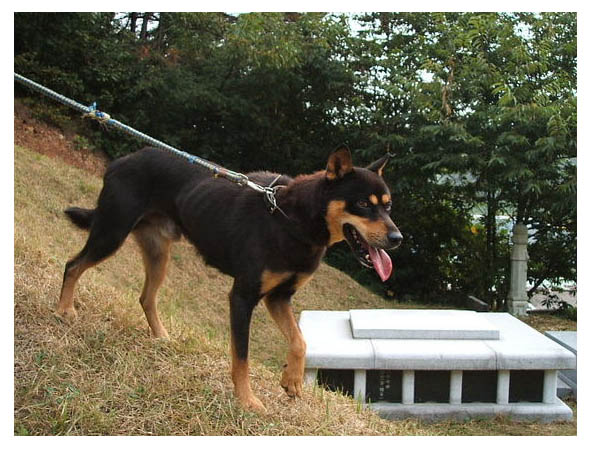
An obvious Doberman-Jindo mix
|
Some of the breeds used in mixings also contributed other colors besides black/tan. Obvious physical differences, like the chocolate/tans (ie. "reds" in Dobermans), were occasionally produced by black/tan breeders, but they were quietly removed and hidden away. However, dogs that carried the brown dilution gene but did not outwardly show it were sold and bred. These brown dilution genes could be passed on, be spread to other colors, and eventually be revealed several generations after the intial mixed breeding occurred.
It is inaccurate to claim that the liver skin pigment and lack of black hair pigments are "just a degeneration" due to only inbreeding practices within Jindos. This claim is unsubstantiated by the Belyaev Russian Fox Experiment.
Inbreeding will bring out these foreign recessive dilution genes out to the forefront, but it would not spontaneously create them. The odds of any kind of mutation is one in a million. The chances of a mutation that recreates a liver dilute found in another breed is many times more unlikely.
It is my opinion that any type of "chokho" dogs should not be promoted nor bred as they are mixes that defy what was historically found in Jindos.












